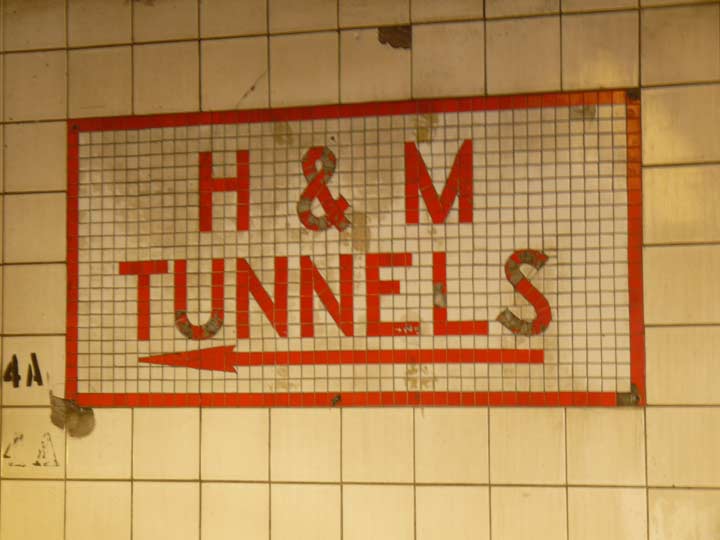
The Hudson & Manhattan Railroad is unfamiliar to most modern-day commuters, but transit buffs recognize it as the present-day PATH train, an acronym for the Port Authority Trans-Hudson Railroad — which, after its original run in 1908, remains the only subway between Manhattan and New Jersey, traveling along various branches to Hoboken, Jersey City and Newark.
The PATH is the modern-day result of the first attempt to cross the mighty Hudson by placing railroad tracks in a tunnel. Engineer Dewitt Clinton Haskins drove a partial tunnel from the Jersey side beginning as early as 1874 but got only partway before an accident claimed 20 lives. A British firm took up the mantle in 1890, but again was forced to abandon the pursuit.
An ambitious lawyer from Georgia via Tennessee, William Gibbs McAdoo, obtained backing and employed upgraded tunneling methods in 1901, proceeding to do what by then was considered impossible: he engineered multiple tunnels and inaugurated rail service, the first trans-Hudson rail of its kind, between NYC and Hoboken, from 1908-1910 and Jersey City and Newark Park Place in 1911. Newark Penn Station service was added to what was called the Hudson and Manhattan Railroad in 1937. Original service ran between Hoboken and 19th Street (now closed to the general public) and opened February 25, 1908. The H&M was, in effect, the original 6th Avenue Subway — Independent Subway 6th Avenue service did not open until December 15, 1940.
The H&M was, in part, responsible for the old World Trade Center. The railroad had fallen into bankruptcy in the 1950s, but The Port Authority agreed to purchase and maintain the Hudson Tubes in return for the rights to build the World Trade Center on the land occupied by H&M’s Hudson Terminal (the “original” Twin Towers on Church Street), which was the Lower Manhattan terminus of the Tubes.
William Gibbs McAdoo (1863-1941), the son-in-law of U.S. President Woodrow Wilson, acted as Wilson’s Treasury Secretary from 1913 until 1919, raising millions for the US effort in WWI. He unsuccessfully ran twice for the Democratic presidential nomination in 1920 and 1924, and was later elected a US Senator from California in 1933, serving one 6-year term.
Various remnants of the H&M remain in place where it connects to (but does not transfer to) NYC subways. The sign shown above can be seen in the 14th Street station serving F trains on 6th Avenue. MetroCards can be used to access PATH trains but, I’ll repeat, another fare is necessary when transferring.
Much more on FNY’s PATH train page.
4/13/16